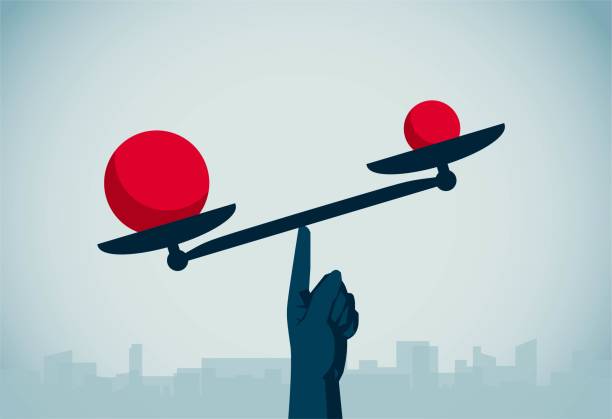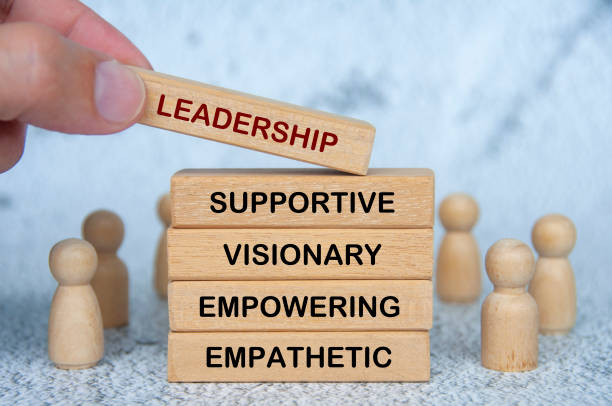Pricing Leadership Roles for Top Executives: A Comprehensive Guide
Explore the intricacies of pricing leadership roles for top executives with our comprehensive guide.

Pricing Leadership Roles for Top Executives: A Comprehensive Guide
In today's competitive business landscape, effective pricing strategies are crucial for sustaining profitability and driving growth. As organizations strive to optimize their pricing models, the role of top executives in pricing leadership becomes increasingly significant. This comprehensive guide delves into the intricacies of pricing leadership roles for top executives, exploring their responsibilities, challenges, and the skills required to excel in this vital area.
The Importance of Pricing Leadership
Pricing leadership is not merely about setting prices; it encompasses a strategic approach that aligns pricing with overall business objectives. Executives in pricing leadership roles are tasked with ensuring that pricing strategies reflect market conditions, customer expectations, and the organization’s value proposition.
Aligning Pricing with Business Strategy
One of the primary responsibilities of executives in pricing leadership is to align pricing strategies with the broader business strategy. This involves understanding how pricing decisions impact revenue, market share, and customer loyalty. By integrating pricing into the overall business framework, executives can drive more informed decision-making and enhance organizational performance.
Moreover, aligning pricing with business strategy requires a deep understanding of market dynamics and competitive positioning. Executives must analyze market trends, customer behavior, and competitor pricing to develop strategies that not only meet current demands but also anticipate future shifts. This proactive approach can help organizations stay ahead of competitors and capitalize on emerging opportunities, ensuring that pricing remains a key lever for growth and innovation.
Additionally, effective pricing alignment often necessitates collaboration across various departments, including marketing, sales, and product development. By fostering cross-functional communication, executives can ensure that all teams are on the same page regarding pricing objectives and strategies, which can lead to a more cohesive and effective approach to market challenges.
Driving Profitability Through Pricing
Pricing leadership plays a critical role in driving profitability. Executives must evaluate pricing models to determine their effectiveness in maximizing margins while remaining competitive. This often involves implementing dynamic pricing strategies that can adapt to changing market conditions.
Furthermore, effective pricing leadership requires a focus on value-based pricing, where prices reflect the perceived value of products or services. By understanding customer needs and willingness to pay, executives can set prices that optimize revenue without alienating potential buyers. This approach not only enhances profitability but also fosters stronger customer relationships, as it demonstrates a commitment to delivering value.
Moreover, the integration of advanced analytics and technology into pricing strategies can further enhance profitability. By leveraging data analytics tools, executives can gain insights into customer purchasing patterns, price elasticity, and competitive pricing movements. This data-driven approach allows for more precise pricing decisions, enabling organizations to respond swiftly to market changes and optimize their pricing strategies in real time. As a result, businesses can better navigate the complexities of pricing in a fast-paced environment, ensuring sustained profitability and competitive advantage.
Key Responsibilities of Pricing Executives
Pricing executives hold a range of responsibilities that extend beyond mere price setting. These roles require a combination of analytical skills, strategic thinking, and leadership capabilities. Below are some of the key responsibilities that define pricing leadership roles.
Market Analysis and Research
Conducting thorough market analysis is a cornerstone of effective pricing leadership. Executives must gather and interpret data on market trends, competitor pricing, and customer preferences. This information is vital for making informed pricing decisions that align with market realities.
Additionally, market research helps in identifying opportunities for price adjustments or new pricing strategies. By staying attuned to shifts in the market, executives can proactively respond to changes that may affect pricing dynamics. They often utilize advanced analytical tools and software to dissect large volumes of data, enabling them to predict future trends and consumer behavior with greater accuracy. This proactive approach not only enhances pricing strategies but also contributes to the overall strategic direction of the company.
Collaboration Across Departments
Pricing decisions do not occur in a vacuum; they require collaboration across various departments, including marketing, sales, finance, and product development. Executives in pricing leadership must foster cross-functional communication to ensure that pricing strategies are well-integrated with other business functions.
This collaboration is essential for understanding how pricing impacts product positioning, promotional strategies, and overall customer experience. By working closely with other departments, pricing executives can create cohesive strategies that enhance the organization's competitive edge. Regular meetings and workshops can facilitate this collaboration, allowing teams to brainstorm and share insights that lead to innovative pricing solutions. Moreover, establishing a feedback loop between departments ensures that all teams are aligned and can adapt to any changes in market conditions or consumer preferences swiftly.
Monitoring and Adjusting Pricing Strategies
Once pricing strategies are implemented, continuous monitoring is essential. Executives must track performance metrics to assess the effectiveness of pricing decisions. This includes analyzing sales data, customer feedback, and market fluctuations.
Based on these insights, executives must be prepared to make adjustments to pricing strategies as needed. Flexibility and responsiveness are key traits for leaders in pricing roles, as market conditions can change rapidly, requiring swift action to maintain competitiveness. They often employ A/B testing to evaluate different pricing models and gauge customer reactions, which can provide invaluable insights into consumer price sensitivity. Furthermore, leveraging predictive analytics can help executives anticipate future pricing challenges, ensuring that they remain ahead of the curve and can implement changes before issues arise. This proactive stance not only safeguards revenue but also strengthens customer loyalty by demonstrating a commitment to delivering value.
Challenges Faced by Pricing Executives
While pricing leadership offers significant opportunities, it also presents a unique set of challenges. Executives must navigate complex market dynamics, internal organizational structures, and external pressures. Understanding these challenges is crucial for effective pricing leadership.
Balancing Profitability and Customer Satisfaction
One of the most significant challenges faced by pricing executives is striking the right balance between profitability and customer satisfaction. Setting prices too high can deter potential customers, while prices that are too low may erode margins and devalue the brand.
To address this challenge, executives must employ a customer-centric approach to pricing. This involves understanding customer needs and perceptions to ensure that pricing reflects the value delivered. Engaging with customers and soliciting feedback can provide valuable insights that inform pricing strategies. Additionally, utilizing data analytics can help executives identify customer segments that are more price-sensitive, allowing for tailored pricing strategies that maximize both satisfaction and profitability.
Adapting to Market Changes
The business environment is constantly evolving, influenced by factors such as technological advancements, economic shifts, and changing consumer behaviors. Pricing executives must remain agile and adaptable to respond effectively to these changes.
This may involve revisiting pricing strategies regularly and being willing to experiment with new models. Staying ahead of market trends and competitor actions is essential for maintaining a competitive advantage. For instance, the rise of subscription-based models in various industries has prompted many pricing leaders to rethink traditional one-time purchase strategies. By embracing innovative pricing structures, executives can better align their offerings with consumer expectations and market demands.
Overcoming Internal Resistance
Implementing new pricing strategies can sometimes meet resistance from internal stakeholders. Departments may have differing priorities or concerns about how pricing changes will impact their operations. Pricing executives must navigate these internal dynamics to gain buy-in and support for their strategies.
Effective communication and collaboration are key to overcoming resistance. Engaging stakeholders early in the process and demonstrating the potential benefits of pricing changes can help foster a more supportive environment. Additionally, providing training and resources to teams affected by pricing adjustments can alleviate concerns and empower them to embrace new strategies. By creating a culture of transparency and inclusivity, pricing executives can enhance collaboration across departments, ensuring that everyone is aligned towards common goals.
Essential Skills for Pricing Executives
Successful pricing executives possess a unique blend of skills that enable them to navigate the complexities of pricing leadership. Below are some of the essential skills that define effective pricing leaders.
Analytical Skills
Strong analytical skills are paramount for pricing executives. The ability to interpret data, identify trends, and draw actionable insights is critical for making informed pricing decisions. Executives must be comfortable working with quantitative data and utilizing analytical tools to assess pricing performance.
Moreover, analytical skills extend to understanding customer behavior and market dynamics. Executives who can analyze customer segments and preferences are better equipped to develop targeted pricing strategies that resonate with their audience. This often involves employing advanced analytics techniques such as predictive modeling and segmentation analysis, which can uncover hidden opportunities and optimize pricing structures. By leveraging these insights, pricing executives can not only enhance profitability but also improve customer satisfaction and loyalty through personalized pricing approaches.
Strategic Thinking
Pricing leadership requires a strategic mindset. Executives must think critically about how pricing decisions align with overall business objectives and market positioning. This involves considering long-term implications and potential risks associated with pricing strategies.
Strategic thinking also encompasses the ability to anticipate market changes and proactively adapt pricing models. Executives who can envision future trends are better positioned to implement effective pricing strategies that drive sustainable growth. This foresight often requires staying abreast of industry developments, competitor actions, and economic indicators that could impact pricing. By fostering a culture of innovation and agility within their teams, pricing executives can ensure that their organizations remain competitive and responsive to shifting market conditions.
Leadership and Communication Skills
Effective pricing executives must possess strong leadership and communication skills. Leading cross-functional teams and collaborating with various departments requires the ability to articulate pricing strategies clearly and persuasively.
Moreover, pricing executives must be able to inspire and motivate their teams to embrace pricing initiatives. Building a culture that values data-driven decision-making and continuous improvement is essential for fostering a successful pricing environment. This includes not only providing guidance and support but also encouraging open dialogue and feedback among team members. By cultivating an inclusive atmosphere where ideas can be freely exchanged, pricing leaders can harness the collective expertise of their teams, leading to more innovative and effective pricing solutions that align with the company's strategic goals. Additionally, effective communication with external stakeholders, such as customers and partners, is crucial in ensuring that pricing strategies are understood and accepted, further enhancing the overall effectiveness of pricing initiatives.
Best Practices for Pricing Leadership
Implementing best practices in pricing leadership can significantly enhance the effectiveness of pricing strategies. Below are some key practices that executives should consider adopting.
Utilizing Technology and Data Analytics
In an era of big data, leveraging technology and data analytics is crucial for effective pricing leadership. Executives should invest in tools and platforms that facilitate data collection, analysis, and reporting. Advanced analytics can provide insights into pricing performance, customer behavior, and market trends.
Moreover, technology can enable dynamic pricing strategies that adjust in real-time based on market conditions. Executives who embrace technology are better equipped to make data-driven pricing decisions that enhance competitiveness. For instance, machine learning algorithms can analyze vast amounts of data to predict how changes in pricing might affect sales, allowing leaders to optimize their pricing strategies proactively rather than reactively. This not only improves profit margins but also enhances customer loyalty by ensuring prices reflect current market realities.
Fostering a Culture of Continuous Improvement
Creating a culture of continuous improvement is essential for pricing leadership. Executives should encourage experimentation and innovation in pricing strategies, allowing teams to test new approaches and learn from outcomes.
Regularly reviewing pricing performance and soliciting feedback from stakeholders can help identify areas for improvement. By fostering an environment that values learning and adaptation, pricing executives can drive ongoing enhancements in pricing strategies. This could involve setting up cross-functional teams that bring together diverse perspectives, from sales to marketing, to collaboratively explore pricing challenges and opportunities. Such collaboration can lead to innovative solutions that might not emerge in siloed environments, ultimately resulting in pricing strategies that are more aligned with both market demands and organizational goals.
Engaging with Customers
Customer engagement is a vital component of effective pricing leadership. Executives should prioritize understanding customer needs, preferences, and perceptions of value. This can be achieved through surveys, focus groups, and direct interactions with customers.
By actively engaging with customers, executives can gain valuable insights that inform pricing strategies and enhance customer satisfaction. Understanding the customer perspective is key to developing pricing models that resonate with the target audience. Additionally, utilizing customer feedback to refine pricing can lead to more personalized offerings, which can significantly boost customer loyalty. For example, implementing tiered pricing structures based on customer segments can cater to different willingness to pay, ensuring that each customer feels they are receiving value for their investment. This approach not only maximizes revenue potential but also cultivates a stronger relationship between the brand and its customers, fostering long-term loyalty and advocacy.
Conclusion
Pricing leadership roles for top executives are critical in navigating the complexities of today's business environment. By aligning pricing strategies with overall business objectives, driving profitability, and fostering collaboration across departments, executives can enhance organizational performance.
While challenges exist, effective pricing executives possess the analytical skills, strategic thinking, and leadership capabilities necessary to overcome obstacles and drive success. By adopting best practices and embracing a customer-centric approach, pricing leaders can position their organizations for sustainable growth in a competitive landscape.
In conclusion, as the marketplace continues to evolve, the importance of pricing leadership will only increase. Executives who prioritize effective pricing strategies will be well-equipped to lead their organizations toward a prosperous future.
If you're seeking to elevate your company's leadership with top-tier talent, or you're a professional ready to take on a senior-level role, Jennings Executive Search is your partner in success. With a track record of placing high-caliber candidates in strategic positions such as Director of Pricing Strategy and Global Pricing Lead, we understand the importance of a well-maintained talent pool. Learn More about how Jennings Executive can help you navigate the complexities of executive recruitment and secure the right fit for your organization's future.
Recommended For You

The Pricing Analyst's Toolkit
The essential pricing analyst toolkit—and what truly drives impact in the role.

Why Your Pricing Team Can't Be All Strategy Or All Execution
Pricing teams break when strategy and execution are out of balance—here’s how to fix it.

The Pricing Career Ladder - From Analyst To VP and Beyond
Inside the pricing career ladder: what drives growth from analyst to VP

What Makes A Great Pricing Leader
Great pricing leaders connect strategy to execution, influence without authority, and drive value.

How Private Equity Is Professionalizing Pricing
Pricing roles vary by model: B2B = control amid deal chaos; B2C = brand, perception, speed; DTC = pricing as growth lever. Success depends on fit, not title.

Why Not Just Post The Job?
Posting jobs works for volume hiring, but not for strategic roles. Most top talent isn’t applying—specialized recruiters like JES deliver faster, higher-quality pricing hires.


